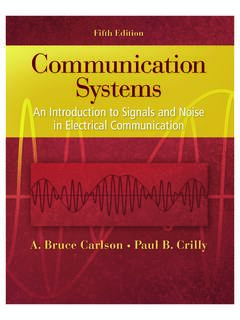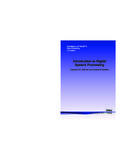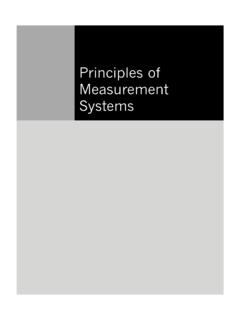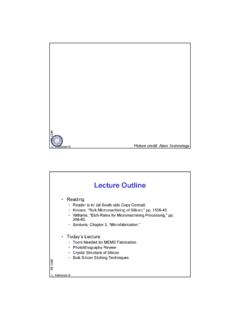Transcription of Principles of Measurement Systems
1 Principles ofMeasurementSystems We work with leading authors to develop the strongest educational materials in engineering, bringing cutting-edge thinking and best learning practice to a global a range of well-known imprints, including Prentice Hall, we craft high quality print and electronic publications which help readers to understand and apply their content, whether studying or at find out more about the complete range of our publishing, please visit us on the World Wide Web at: Principles ofMeasurementSystemsFourth EditionJohn P.
2 BentleyEmeritus Professor of Measurement Systems University of Teesside Pearson Education LimitedEdinburgh GateHarlowEssex CM20 2 JEEnglandand Associated Companies throughout the worldVisit us on the World Wide Web published 1983 Second Edition 1988 Third Edition 1995 Fourth Edition published 2005 Pearson Education Limited 1983, 2005 The right of John P. Bentley to be identified as author of this work has been asserted by him in accordance w th the Copyright, Designs and Patents Act rights reserved. No part of this publication may be reproduced, stored in a retrieval system, or transmitted in any form or by any means, electronic, mechanical, photocopying, recording or otherwise, without either the prior written permission of the publisher or a licence permitting restricted copying in the United Kingdom issued by the Copyright Licensing Agency Ltd, 90 Tottenham Court Road.
3 London W1T 0 130 43028 5 British Library Cataloguing-in-Publication DataA catalogue record for this book is available from the British LibraryLibrary of Congress Cataloging-in-Publication DataBentley, John P., 1943 Principles of Measurement Systems / John P. Bentley. 4th bibliographical references and 0-13-043028-51. Physical instruments. 2. Physical measurements. 3. Engineering Automatic control. I. dc2220040444671098765432110 09 08 07 06 05 Typeset in 10/12pt Times by 35 Printed in MalaysiaThe publisher s policy is to use paper manufactured from sustainable forests.
4 To Pauline, Sarah and Victoria Preface to the fourth editionxiAcknowledgementsxiiiPart A General Principles11 The General Measurement Purpose and performance of Measurement Structure of Measurement Examples of Measurement Block diagram symbols72 Static Characteristics of Measurement System Systematic Generalised model of a system Statistical Identification of static characteristics calibration213 The Accuracy of Measurement Systems in the Steady Measurement
5 Error of a system of ideal The error probability density function of a system of non-ideal Error reduction techniques414 Dynamic Characteristics of Measurement Transfer function G(s) for typical system Identification of the dynamics of an Dynamic errors in Measurement Techniques for dynamic compensation705 Loading Effects and Two-port Electrical Two-port networks846 Signals and Noise in Measurement Statistical representation of random Effects of noise and interference on Measurement Noise sources and coupling Methods of reducing effects of noise and interference113 Contents viiiCONTENTS7 Reliability.
6 Choice and Economics of Measurement Reliability of Measurement Choice of Measurement Total lifetime operating cost141 Part B Typical Measurement System Elements1478 Sensing Resistive sensing Capacitive sensing Inductive sensing Electromagnetic sensing Thermoelectric sensing Elastic sensing Piezoelectric sensing Piezoresistive sensing electrochemical sensing Hall effect sensors1969 Signal Conditioning Deflection carrier Current Oscillators and resonators23510 Signal Processing Elements and Analogue-to-digital (A/D) Computer and microcontroller Microcontroller and computer Signal processing calculations27011 Data Presentation Review and choice of data presentation Pointer scale Digital display Light-emitting diode (LED) Cathode ray tube (CRT) Liquid crystal displays (LCDs) Electroluminescence (EL)
7 Chart Paperless Laser printers307 CONTENTSixPart C Specialised Measurement Systems31112 Flow Measurement Essential Principles of fluid Measurement of velocity at a point in a Measurement of volume flow Measurement of mass flow Measurement of flow rate in difficult situations34213 Intrinsically Safe Measurement Pneumatic Measurement Intrinsically safe electronic systems36214 Heat Transfer Effects in Measurement Dynamic characteristics of thermal Constant-temperature anemometer system for fluid velocity Katharometer Systems for gas thermal conductivity and composition measurement37815 Optical Measurement Introduction.
8 Types of Transmission Geometry of coupling of detector to Detectors and signal conditioning Measurement systems40916 Ultrasonic Measurement Basic ultrasonic transmission Piezoelectric ultrasonic transmitters and Principles of ultrasonic Examples of ultrasonic Measurement systems44717 Gas Principles and basic Typical gas Signal processing and operations sequencing46818 Data Acquisition and Communication Time division Typical data acquisition Parallel digital Serial digital Error detection and Frequency shift Communication Systems for measurement493 xCONTENTS19 The Intelligent Multivariable Measurement The structure of an intelligent multivariable Modelling methods for multivariable systems507 Answers to Numerical Problems515 Index521 Measurement is an essential activity in every branch of technology and science.
9 Weneed to know the speed of a car, the temperature of our working environment, theflow rate of liquid in a pipe, the amount of oxygen dissolved in river water. It is import-ant, therefore, that the study of Measurement forms part of engineering and sciencecourses in further and higher education. The aim of this book is to provide the funda-mental Principles of Measurement which underlie these book treats Measurement as a coherent and integrated subject by presentingit as the study of Measurement Systems . A Measurement system is an information system which presents an observer with a numerical value corresponding to the vari-able being measured.
10 A given system may contain four types of element: sensing,signal conditioning, signal processing and data presentation book is divided into three parts. Part A (Chapters 1 to 7)examines generalsystems Principles . This part begins by discussing the static and dynamic charac-teristics that individual elements may possess and how they are used to calculate theoverall system Measurement error, under both steady and unsteady conditions. In laterchapters, the Principles of loading and two-port networks, the effects of interferenceand noise on system performance, reliability, maintainability and choice using economic criteria are explained.











